Stabilization of the Magnetic Levitation System
Abstract
1. Introduction
2. Magnetic Levitation Plant
3. Weighted PID Controller Design
Experimental Results
4. Multiple Real Dominant Pole Controller Design
4.1. PD Controller Design by the Triple Real Dominant Pole Method
4.2. IMC Control of the Stabilized Plant
4.3. Direct PID Controller Design
5. Conclusions
Author Contributions
Funding
Institutional Review Board Statement
Informed Consent Statement
Data Availability Statement
Conflicts of Interest
References
- Quanser. Magnetic Levitation. Available online: https://www.quanser.com/products/magnetic-levitation/ (accessed on 4 August 2021).
- Humusoft s.r.o. CE152 Magnetic Levitation Model. Available online: https://www.humusoft.cz/models/ce152/ (accessed on 20 July 2019).
- Googol Technology Ltd. Magnetic Levitation System. Available online: http://www.googoltech.com/pro_view-67.html (accessed on 4 August 2021).
- LD Didactic Group. E6.3.5.14 Magnetic Levitation. Available online: https://www.ld-didactic.de/phk/gruppen.asp?PT=VE6.3.5.14&L=2 (accessed on 4 August 2021).
- INTECO. Magnetic Levitation Systems. Available online: http://www.inteco.com.pl/products/magnetic-levitation-systems/ (accessed on 4 August 2021).
- Gazdoš, F.; Dostál, P.; Pelikán, R. Polynomial approach to control system design for a magnetic levitation system. Cybern. Lett. 2009, 7, 1–19. [Google Scholar]
- Jen, C.H.; Jiang, B.C.; Fan, S.K.S. General run-to-run (R2R) control framework using self-tuning control for multiple-input multiple-output (MIMO) processes. Int. J. Prod. Res. 2004, 42, 4249–4270. [Google Scholar] [CrossRef]
- Fan, S.K.S.; Jiang, B.C.; Jen, C.H.; Wang, C.C. SISO run-to-run feedback controller using triple EWMA smoothing for semiconductor manufacturing processes. Int. J. Prod. Res. 2002, 40, 3093–3120. [Google Scholar] [CrossRef]
- Kumar, E.V.; Jerome, J. LQR based Optimal Tuning of PID Controller for Trajectory Tracking of Magnetic Levitation System. Procedia Eng. 2013, 64, 254–264. [Google Scholar] [CrossRef]
- Huba, M.; Kamenský, M. Constrained Magnetic Levitation Control. IFAC Proc. Vol. 2005, 38, 901–906. [Google Scholar] [CrossRef]
- Fan, S.K.S.; Lin, Y. Multiple-input dual-output adjustment scheme for semiconductor manufacturing processes using a dynamic dual-response approach. Eur. J. Oper. Res. 2007, 180, 868–884. [Google Scholar] [CrossRef]
- Hypiusová, M.; Kozáková, A. Robust PID controller design for the magnetic levitation system: Frequency domain approach. In Proceedings of the 21st International Conference on Process Control (PC), Štrbské Pleso, Slovakia, 6–9 June 2017; pp. 274–279. [Google Scholar] [CrossRef]
- Chalupa, P.; Novák, J.; Malý, M. Modelling And Model Predictive Control Of Magnetic Levitation Laboratory Plant. In Proceedings of the 31st European Conference on Modelling and Simulation (ECMS), Budapest, Hungary, 23–26 May 2017; pp. 367–373. [Google Scholar] [CrossRef][Green Version]
- Rušar, L.; Krhovják, A.; Bobál, V. Predictive control of the magnetic levitation model. In Proceedings of the 2017 21st International Conference on Process Control (PC), Štrbské Pleso, Slovakia, 6–9 June 2017; pp. 345–350. [Google Scholar] [CrossRef]
- Barie, W.; Chiasson, J. Linear and nonlinear state-space controllers for magnetic levitation. Int. J. Syst. Sci. 1996, 27, 1153–1163. [Google Scholar] [CrossRef]
- Lee, T.E.; Su, J.P.; Yu, K.W. Implementation of the State Feedback Control Scheme for a Magnetic Levitation System. In Proceedings of the 2007 2nd IEEE Conference on Industrial Electronics and Applications, Harbin, China, 23–25 May 2007; pp. 548–553. [Google Scholar] [CrossRef]
- Chamraz, Š. Design of the position controller using the generalized method of required dynamics. J. Cybern. Inform. 2010, 11, 32–40. [Google Scholar]
- Chamraz, Š. Controller Design Based on Direct Synthesis and Disturbance Rejection. In Proceedings of the 10th International Conference Process Control; University of Pardubice: Kouty nad Desnou, Czech Republic; 2012. [Google Scholar]
- Farana, R.; Walek, B.; Janosek, M.; Zacek, J. Advantages of Fuzzy Control Application in Fast and Sensitive Technological Processes. Int. J. Electr. Comput. Eng. 2015, 9, 1270–1274. [Google Scholar] [CrossRef]
- Hamed, B.; Elreesh, H.A.; Balakrishnan, P.; Molhem, M. FPGA Optimized Fuzzy Controller Design for Magnetic Ball Levitation using Genetic Algorithms. ACEEE Int. J. Electr. Power Eng. 2012, 10, 72–81. [Google Scholar]
- Humusoft s.r.o. CE152 Magnetic Levitation Model—Educational Manual; 2002. [Google Scholar]
- Skogestad, S. Simple analytic rules for model reduction and PID controller tuning. J. Process. Control 2003, 13, 291–309. [Google Scholar] [CrossRef]
- Miklosovic, R.; Gao, Z. A robust two-degree-of-freedom control design technique and its practical application. In Proceedings of the Conference Record of the 2004 IEEE Industry Applications Conference, 2004. 39th IAS Annual Meeting, Seattle, WA, USA, 3–7 October 2004; Volume 3, pp. 1495–1502. [Google Scholar]
- Gao, Z. Active disturbance rejection control: A paradigm shift in feedback control system design. Am. Control. Conf. 2006, 2006, 2399–2405. [Google Scholar]
- Gao, Z. On the centrality of disturbance rejection in automatic control. ISA Trans. 2014, 53, 850–857. [Google Scholar] [CrossRef]
- Zhao, S.; Gao, Z. Modified active disturbance rejection control for time-delay systems. ISA Trans. 2014, 53, 882–888. [Google Scholar] [CrossRef]
- Chen, S.; Xue, W.; Zhong, S.; Huang, Y. On comparison of modified ADRCs for nonlinear uncertain systems with time delay. Sci. China Inf. Sci. 2018, 61, 70223. [Google Scholar] [CrossRef]
- Fliess, M.; Join, C. Model-free control. Int. J. Control 2013, 86, 2228–2252. [Google Scholar] [CrossRef]
- Jiang, N.; Zhang, S.; Xu, J.; Zhang, D. Model-free control of flexible manipulator based on intrinsic design. IEEE/ASME Trans. Mechatron. 2020, 26, 2641–2652. [Google Scholar] [CrossRef]
- Fliess, M.; Join, C. An alternative to proportional-integral and proportional-integral-derivative regulators: Intelligent proportional-derivative regulators. Int. J. Robust Nonlinear Control 2021, 1–13. [Google Scholar] [CrossRef]
- Huba, M.; Škrinárová, J.; Bisták, P. Higher Order PD and iPD controller tuning. IFAC-PapersOnLine 2020, 53, 8808–8813. [Google Scholar] [CrossRef]
- Huba, M.; Bisták, P.; Skachová, Z.; Žáková, K. P- and PD-Controllers for I1 and I2 Models with Dead Time. Theory Pract. Control Syst. 1998, 514–519. [Google Scholar]
- Huba, M.; Vrančić, D. Delay Equivalences in Tuning PID Control for the Double Integrator Plus Dead-Time. Mathematics 2021, 9, 328. [Google Scholar] [CrossRef]
- Huba, M.; Bisták, P.; Vrančić, D. 2DOF IMC and Smith-Predictor-Based Control for Stabilised Unstable First Order Time Delayed Plants. Mathematics 2021, 9, 1064. [Google Scholar] [CrossRef]
- Humusoft s.r.o. MF624-PCI Multifunction I/O Card. Available online: https://www.humusoft.cz/datacq/mf624/ (accessed on 20 July 2019).
- Chamraz, Š.; Žáková, K. Alternative Access to Humusoft Magnetic Levitation System. IFAC-PapersOnLine 2019, 52, 212–216. [Google Scholar] [CrossRef]
- Honc, D.; Sanseverino, E.R. Magnetic Levitation—Modelling, Identification and Open Loop Verification. Trans. Electr. Eng. 2019, 8, 13–16. [Google Scholar] [CrossRef]
- Balko, P.; Rosinová, D. Modeling of magnetic levitation system. In Proceedings of the 2017 21st International Conference on Process Control (PC), Strbske Pleso, Slovakia, 6–9 June 2017; pp. 252–257. [Google Scholar] [CrossRef]
- Hanif, B.; ul Hassan Shaikh, I.; Ali, A. Iterative Learning Control Based Fractional Order PID Controller for Magnetic Levitation System. Mehran Univ. Res. J. Eng. Technol. 2019, 38, 885–900. [Google Scholar] [CrossRef]
- Ali, K.A.; Abdelati, M.; Hussein, M. Modelling, Identification and Control of A Magnetic Levitation CE152. Al-Aqsa Univ. J. (Nat. Sci. Ser.) 2010, 14, 42–68. [Google Scholar]
- Gazdoš, F.; Dostál, P.; Marholt, J. Robust control of unstable systems: Algebraic approach using sensitivity functions. Int. J. Math. Model. Methods Appl. Sci. 2011, 5, 1189–1196. [Google Scholar]
- Huba, M.; Vrančić, D. Extending the Model-Based Controller Design to Higher-Order Plant Models and Measurement Noise. Symmetry 2021, 13, 798. [Google Scholar] [CrossRef]
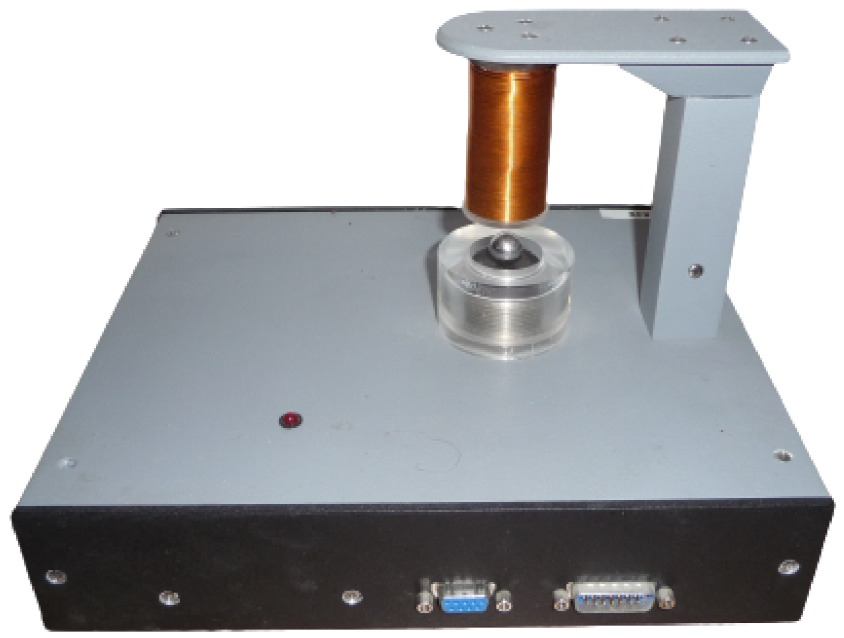


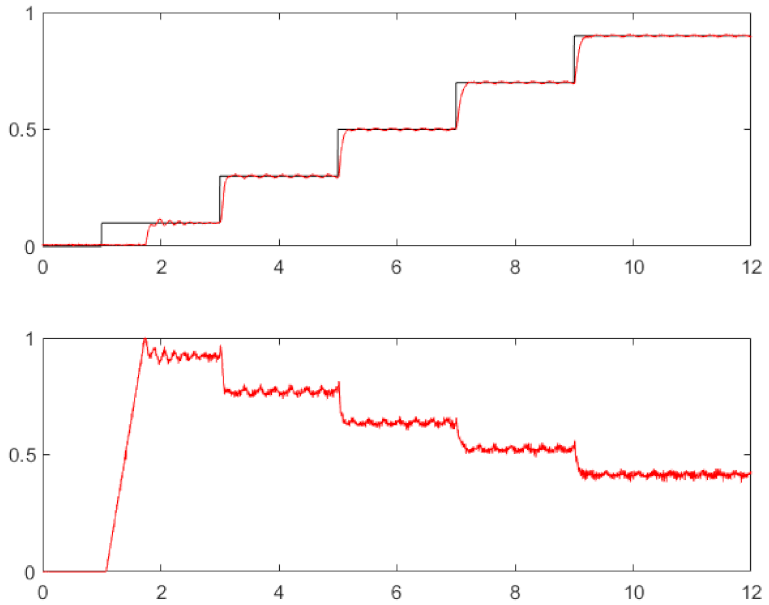


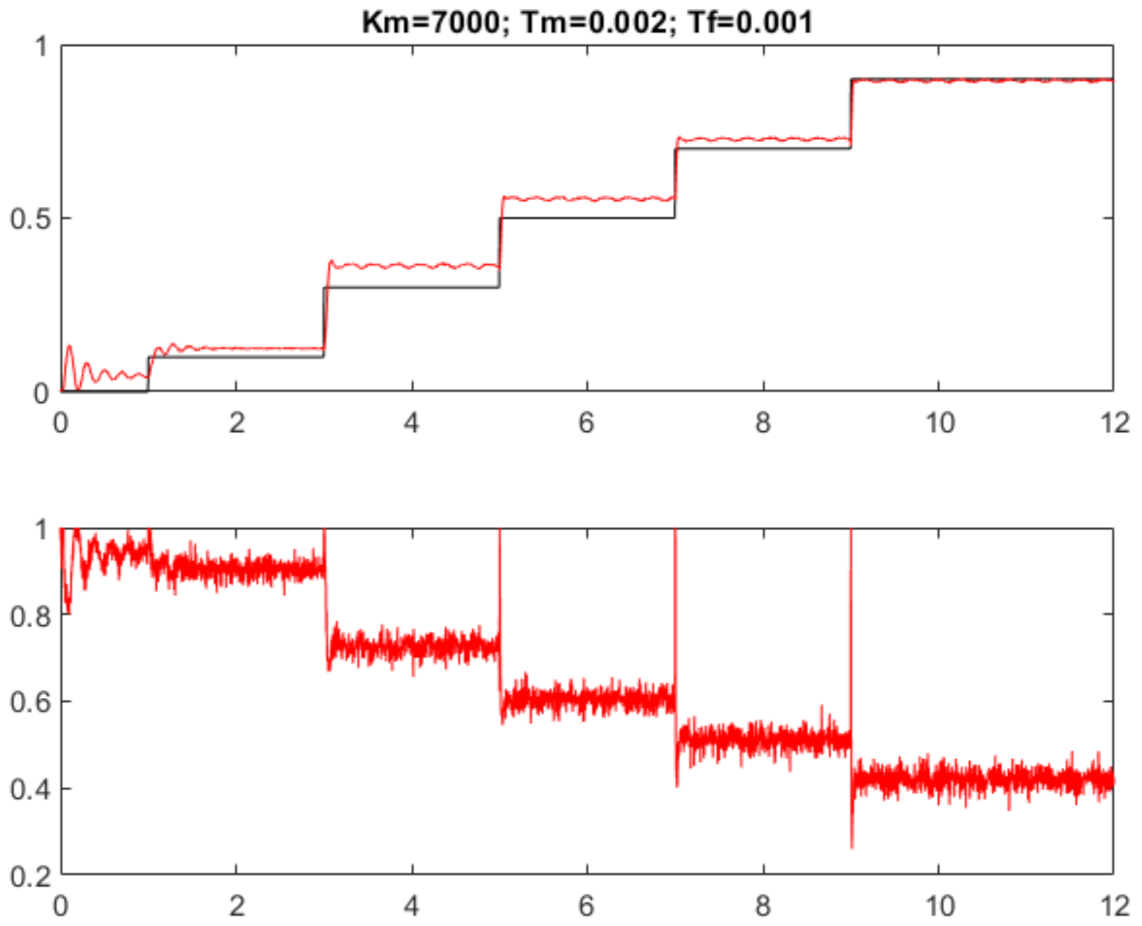
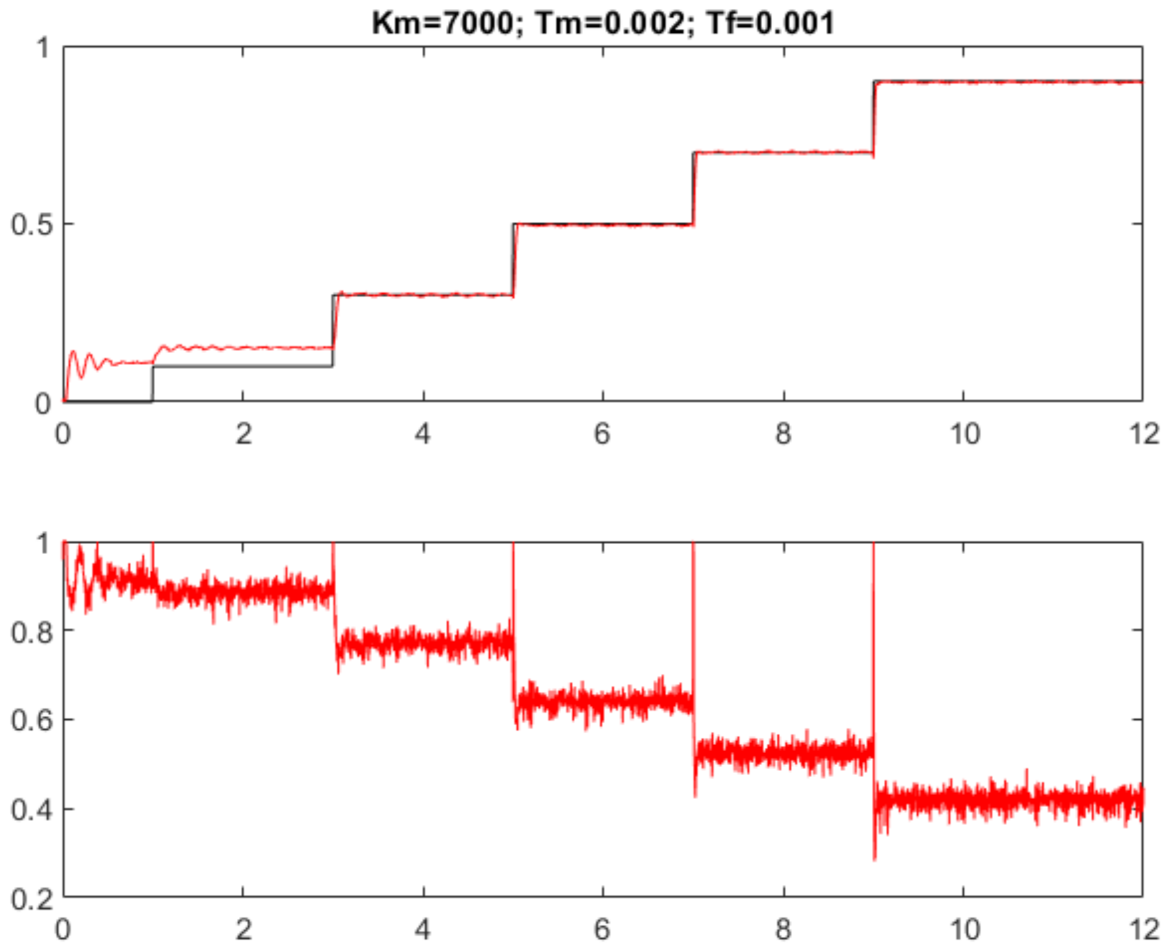
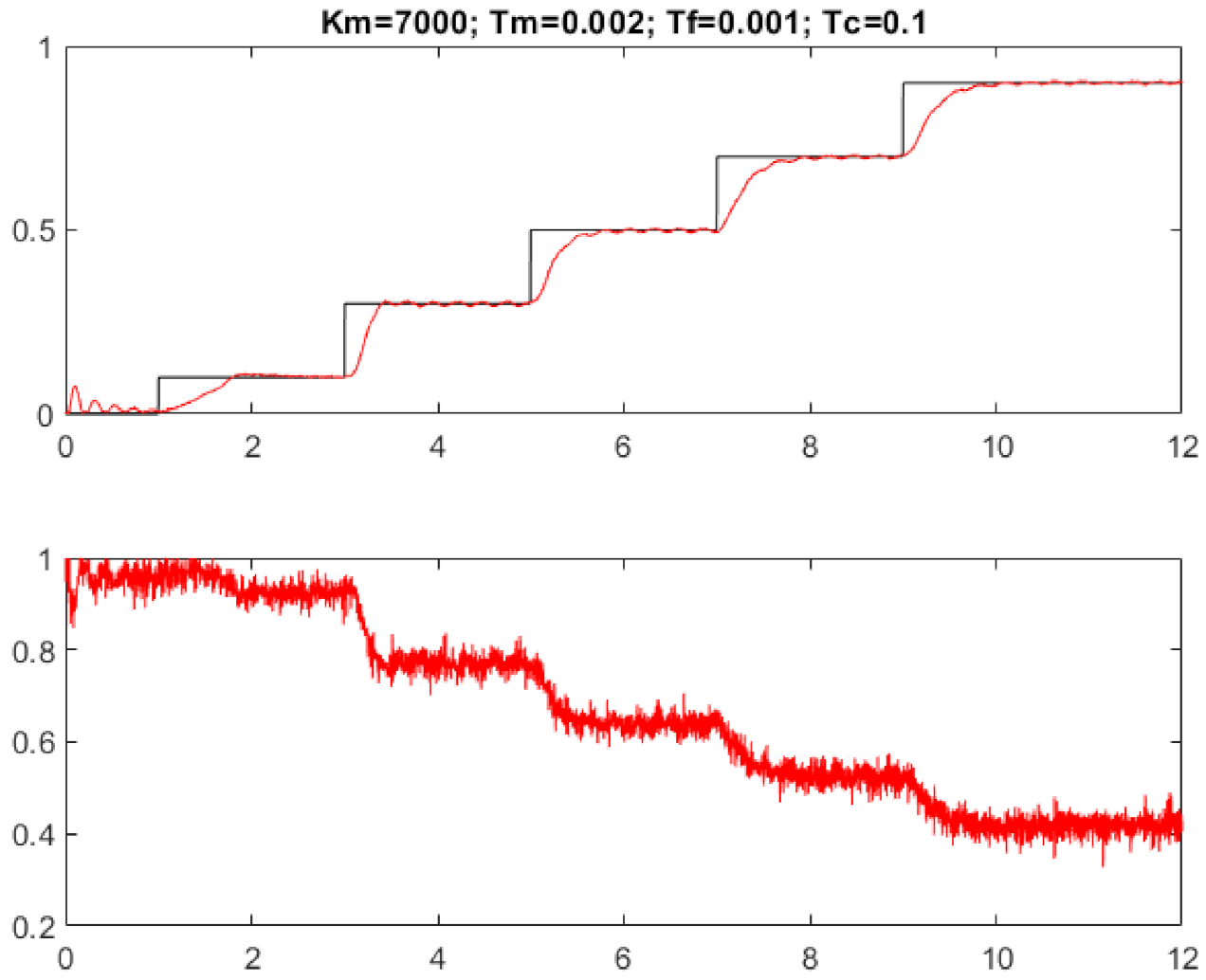

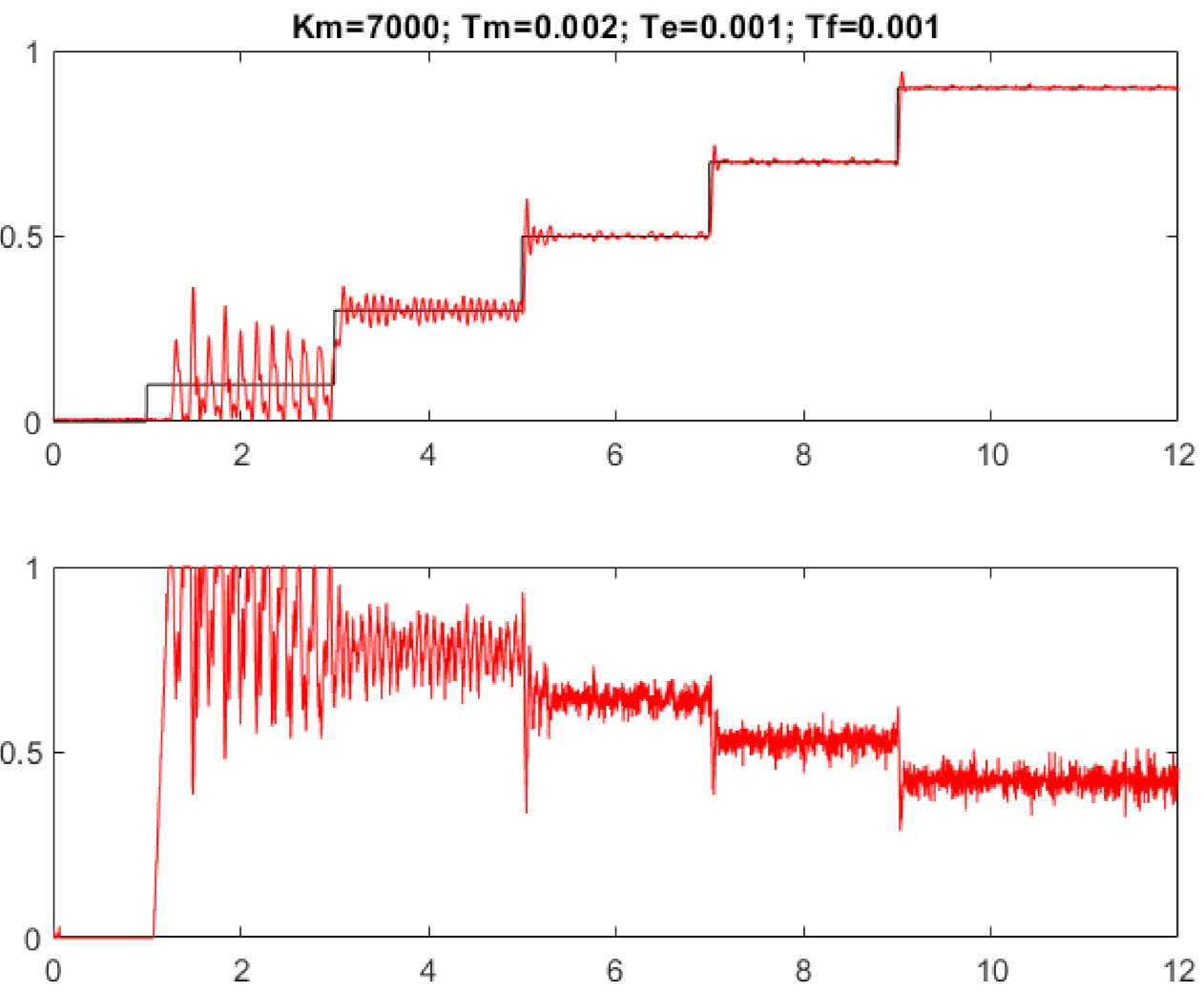
| Variable | Value | Unit | |
|---|---|---|---|
| Gain of the model | K | 1.7 | - |
| Time constant of the model | T | 0.018 | s |
| Controller parameter | 2 | - |
Publisher’s Note: MDPI stays neutral with regard to jurisdictional claims in published maps and institutional affiliations. |
© 2021 by the authors. Licensee MDPI, Basel, Switzerland. This article is an open access article distributed under the terms and conditions of the Creative Commons Attribution (CC BY) license (https://creativecommons.org/licenses/by/4.0/).
Share and Cite
Chamraz, Š.; Huba, M.; Žáková, K. Stabilization of the Magnetic Levitation System. Appl. Sci. 2021, 11, 10369. https://doi.org/10.3390/app112110369
Chamraz Š, Huba M, Žáková K. Stabilization of the Magnetic Levitation System. Applied Sciences. 2021; 11(21):10369. https://doi.org/10.3390/app112110369
Chicago/Turabian StyleChamraz, Štefan, Mikuláš Huba, and Katarína Žáková. 2021. "Stabilization of the Magnetic Levitation System" Applied Sciences 11, no. 21: 10369. https://doi.org/10.3390/app112110369
APA StyleChamraz, Š., Huba, M., & Žáková, K. (2021). Stabilization of the Magnetic Levitation System. Applied Sciences, 11(21), 10369. https://doi.org/10.3390/app112110369






